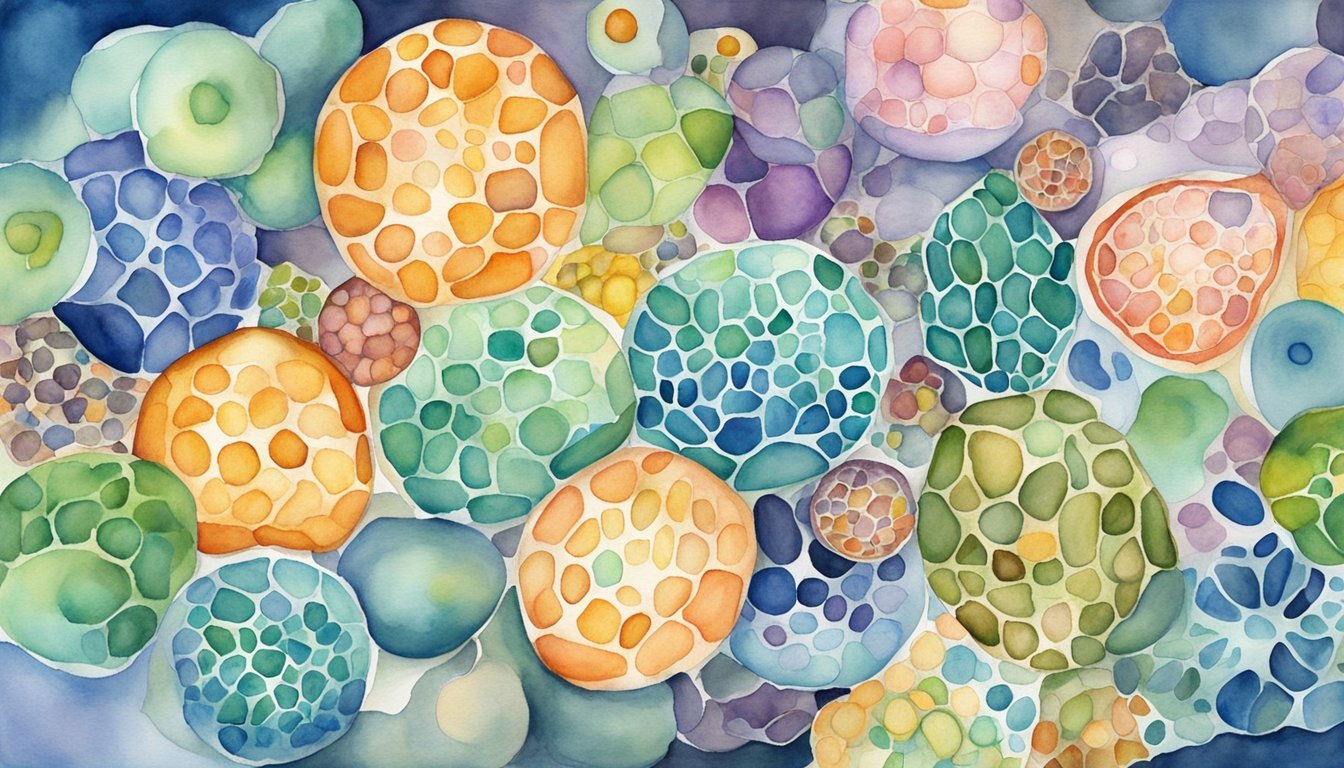Cell Structure and Composition
Animal cells are complex structures that showcase the marvel of nature’s design. Eukaryotic in nature, they consist of a plasma membrane encapsulating numerous vital components necessary for life’s functions. Each part plays a specific role, allowing cells to maintain homeostasis, grow, and reproduce.
Plasma Membrane
The plasma membrane is a critical barrier that separates the interior of the cell from the external environment. This selective membrane is composed primarily of a lipid bilayer with embedded proteins. Phospholipids make up most of the bilayer, arranged with polar heads facing outward and nonpolar fatty acid tails inward, providing a dynamic yet controlled environment.
Cytoplasm
Within the plasma membrane lies the cytoplasm, a jelly-like substance where cellular components reside. It is composed mainly of water, salts, and proteins, providing a medium for biochemical reactions. Structures like the cytoskeleton, with its microfilaments, intermediate filaments, and microtubules, give cells their shape and support movement and division.
Nucleus
The nucleus is the command center of the cell, containing most of the genetic material in the form of DNA and chromosomes. Enclosed by the nuclear envelope, it houses the chromatin and the nucleolus, where ribosomal RNA synthesis occurs. The nucleus orchestrates cell activities, including growth, metabolism, and protein synthesis, by controlling gene expression.
Organelles
Animal cells contain a plethora of organelles, each performing specific tasks. Ribosomes are the sites of protein synthesis, translating genetic instructions into proteins. Lysosomes contain enzymes for digestion, while peroxisomes break down fatty acids. The Golgi apparatus modifies and sorts proteins, and mitochondria are responsible for energy production.
Membrane-Bound Organelles
Apart from those mentioned above, the endoplasmic reticulum (ER) plays a critical role in lipid manufacture and protein folding. Distinguished into rough ER, which is studded with ribosomes, and smooth ER, which is not, they perform different functions. Centrosomes and centrioles are involved in cell division, and vacuoles serve as storage and transport within the cell. Each of these membrane-bound organelles showcases the intricate factory that is the eukaryotic animal cell.
Cell Functions and Processes

Animal cells are complex structures that perform a variety of essential functions necessary for the survival and growth of organisms. These functions range from converting nutrients into energy, to replicating genetic material for reproduction. Understanding these processes helps to unravel the intricacies of both single and multicellular life.
Metabolic Activities
In the realm of Metabolic Activities, animal cells demonstrate a remarkable ability to convert nutrients into energy, a process known as metabolism. This is facilitated by organelles like mitochondria, where cellular respiration occurs, producing ATP, the energy currency of the cell. Cells also utilize enzymes for biochemical reactions, and vesicles transport necessary substances, aiding in cellular digestion and detoxification.
Genetic Processing
Genetic Processing in animal cells involves the synthesis of proteins, which are vital to cell function. DNA, the cell’s genetic material, is transcribed into messenger RNA, which then travels to ribosomes. These ribosomes, composed partly of ribosomal RNA, translate the genetic code into amino acids, creating proteins that perform various functions, including acting as enzymes and forming structural components of the cell.
Structural Support and Movement
The Structural Support and Movement within a cell are primarily driven by the cytoskeleton, a network consisting of microtubules, microfilaments, and intermediate filaments. These structures provide not only support but also assist in cellular movement. Actin filaments, for instance, are crucial in muscle cells for contraction, while cilia and flagella enable cells to move in their environment.
Cell Growth and Division
Cell Growth and Division are central to the life cycle of the cell. Processes like mitosis allow for the replication of cells, vital for growth and healing in multicellular organisms. The centrosome and centrioles play a pivotal role in organizing microtubules during cell division, ensuring that genetic material is evenly distributed between the daughter cells.
Specialized Functions
Each cell type within an organism carries a set of Specialized Functions, fine-tuned for its particular role. Muscle cells, blood cells, and nerve cells all exhibit unique functions; muscle cells generate force and movement, blood cells transport oxygen and nutrients, and nerve cells transmit signals. Fat cells, or adipocytes, store energy, while certain other cell types are specialized in immune defense or sensory perception.
Discover more about the dynamic world of cell parts and functions and delve into the intricate details of animal cell structure and organelles.

